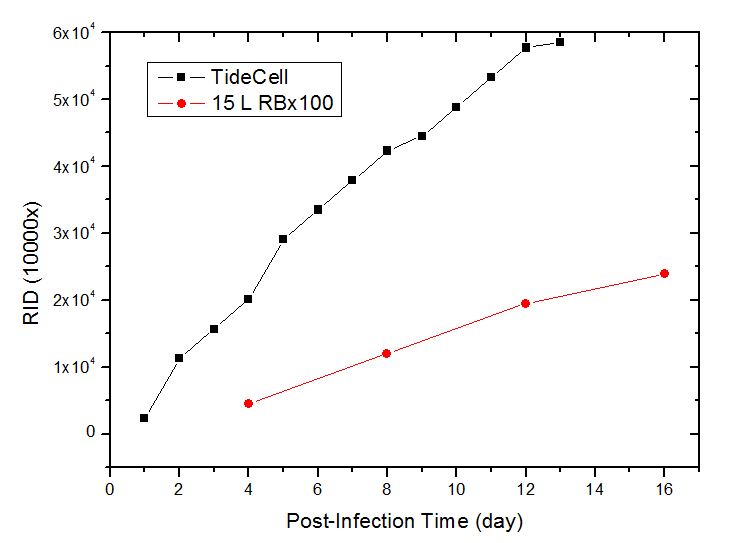Case Study
"TideCell system completely change our company manufacture structure. We are now able to produce 80 folds higher titer hog cholera virus with less operator and space compared with original roller bottle system. More over, 250% revenue increased after switching to TideCell system."
Hog Cholera, also known as Classical Swine Fever (CSF), or Pig Plaque, is a common desease for swines (pigs) and cause serious problems and economic impact to the society. Swine fever causes fever, skin lesions, convulsions and usually (particularly in young animals) death within 15 days. (cited from wikipedia) Veternary vaccine companies in China successfully transfer roller bottle process into TideCell process and could replace 400~700 15 L roller bottles (surface area 3200 cm^2) per batch with one TideCell-010 of only 10 L Matrix Vessel.
|
No.
|
Process Character
|
How TideCell supports the process requirement?
|
Can other systems do the same?
|
|
|
1.
|
High cell density is required to achieve high titer, and reduce medium consumption.
|
High surface area provided in TideCell increase cell density up to 10 folds and save culture medium up to 90%.
|
Roller bottle
|
No. low cell density due to limitation of surface area
|
|
Microcarrier stir tank
|
No. the bead density is limited
|
|||
|
Fixed bed bioreactor
|
Yes, but the scale is limited.
|
|||
|
2.
|
Virus doesn’t cause Cytopathic effect (CPE), and a long term harvest is achievable.
|
Low shear stress and easy medium exchange allows a long harvest cycle in TideCell. Four harvests is able to achieve in roller bottles, but over 28 harvest cycles are achieved in TideCell.
|
Roller bottles
|
Yes.
|
|
Microcarrier stir tank
|
No. shear stress is higher. Cells tend to detach during post-infection period
|
|||
|
Fixed bed bioreactor
|
No. Shear stress is higher. Cells tend to detach during post-infection period.
|
|||
|
3.
|
Infection time is crucial.
|
Carrier sampling and cell count and observation is available in TideCell. Infection time is able to control through the observation and counting process.
|
Roller bottle
|
Yes. Cell density and morphology could be observed under microscope.
|
|
Microcarrier stir tank
|
Yes. Carrier sampling is available.
|
|||
|
Fixed bed bioreactor
|
No. carrier sampling is not available.
|
|||
|
4.
|
Virus is highly unstable: sensitive to temperature. Daily semi-harvest is required.
|
Easy to do medium exchange without interrupting cell culture process.
|
Roller bottle
|
No. bottle has to be removed from culture.
|
|
Microcarrier stir tank
|
No. System has to stop and allow microcarrier to settle.
|
|||
|
Fixed bed bioreactor
|
No. liquid level lower than the working volume will cause termination of mixing.
|
|||
|
5.
|
Low serum or zero serum is required to reduce side effect to pigs
|
Low shear stress culture allow low serum or serum-free culture environment without causing cell detach and loss.
|
Roller bottle
|
No. Cells tend to detach in serum-free culture.
|
|
Microcarrier stir tank
|
No. Cells tend to detach in lowe serum or serum-free culture environment
|
|||
|
Fixed bed bioreactor
|
Yes, or No. Depending on the agitation and recirculation speed during culture.
|
|||
|
6.
|
Final Achievement
|
1. Increase titer from 0.2 mil RIB (roller bottle) to 6 mil. RIB a total 30 fold increase.
2. Increase harvest cycle from 4 (roller bottle) to 28.
3. Save culture medium 1000 L per batch
4. Productivity equivalent to 500 15 L roller bottles.
|
Roller bottle
|
0.2~0.4 RIB
|
|
Microcarrier stir tank
|
Not available
|
|||
|
Fixed-bed bioreactor
|
Not available
|
|||

